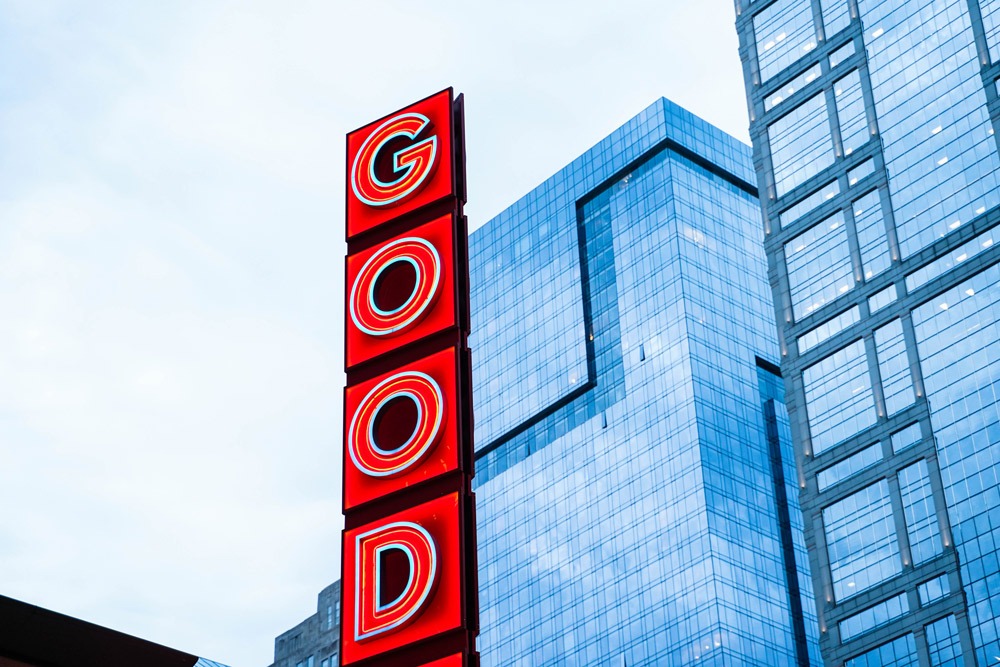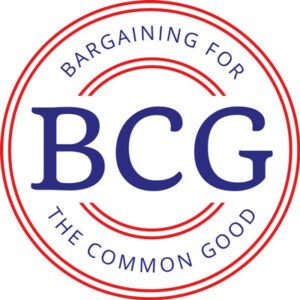

Authored by the BCG Advisory Committee
In this series co-produced by Bargaining for the Common Good and NPQ, titled Building a Movement for the Common Good, we learn how and why Bargaining for the Common Good is the right strategy for our times of social crisis, featuring extreme wealth inequality and declining democracy as well as a renewed attention to labor organizing and mass uprisings for racial justice. The authors reflect on how the BCG strategy revives unions, builds new forms of collective power, and advances a multiracial movement championing racial, gender, climate, and economic justice that can take on 21st century capitalism.
As we mark Labor Day 2022, it is clear that we are approaching an inflection point. We now face greater challenges and opportunities than we confronted during the depths of the Great Recession. On one hand, there is lots of good news. Workers are organizing for wages, working conditions, and power with an energy we have not seen in years. Community and housing groups are organizing tenants to take on corporate landlords and their private equity and hedge fund owners, who are getting rich by making housing more unaffordable. At the same time, however, capital is poised to take advantage of monopoly-induced inflation, and policy makers are threatening to weaken the favorable labor market that has contributed to workers’ rising expectations since we emerged from the COVID shutdown. The conjuncture of these developments has created fertile ground on which to organize. Polling shows higher levels of support for unions and taxing the wealthy than we have seen in decades. We live in a moment that is at once terrifying and dangerous, and inspiring and ripe with opportunity.
This precarious moment, we firmly believe, calls us to pursue a bigger vision than reviving unions and collective bargaining as they existed and operated in the 20th century. It demands that we devote ourselves to creating new models of organizing and bargaining that meet the challenges of 21st century capitalism. Craft unionism evolved to meet the needs of workers in the 19th century. Industrial unionism emerged in the 1930s as the organizational model workers needed in the era of mass production. Public sector unionism developed in the post-World War II era as the numbers of government workers swelled. Similarly, we need to adapt our unions and their strategies to the ways that capitalism functions today. We need to find ways to bring workers and communities together in a common effort that is rooted both in and beyond the workplace.
Working together in recent years with union partners, community organizations, racial and gender justice advocates, and environmentalists, we have built such a model: Bargaining for the Common Good (BCG). In this series of essays published by NPQ over coming weeks, we will introduce you to this model and the ways it is catalyzing new thinking that can help us meet this moment. We believe that in the months and years ahead, Bargaining for the Common Good can play an important role in supporting and organizing a multiracial movement to redistribute wealth and power and realize real democracy.
BCG emerged from local struggles against the destruction of the public sector by the austerity policies implemented during the Great Recession, policies that furthered neoliberal trends that became dominant in the United States in the 1980s. Public school teachers in Chicago and St. Paul, state employees in Oregon, and municipal workers in Los Angeles, among others, began to realize that the ways they had been bargaining collectively with their government employers were no longer working. They were forced to bargain only over issues such as pay and benefits—issues that were most likely to create tensions between these public workers and the working-class constituencies to whom they provided services.
Sign up for our free newsletters
Subscribe to NPQ's newsletters to have our top stories delivered directly to your inbox.
By signing up, you agree to our privacy policy and terms of use, and to receive messages from NPQ and our partners.
Meanwhile, corporate titans were setting the government’s agenda, dictating to public officials what public priorities ought to be. When unions sat down to bargain new contracts, they all too often found themselves sitting across the table from government representatives who didn’t hold real power in their communities but simply acted on behalf of the corporate ruling class. In transformational struggles like the organizing that led to the mammoth 2012 Chicago teachers’ strike, unions began pushing back by joining with parents and community organizations, inviting them to share in crafting bargaining strategies and using bargaining to make demands on behalf of the community—demands beyond the workplace in service of the common good.
By May 2014, significant experimentation in building community-union alignment around efforts to remake the collective bargaining process had occurred. That month, many leading practitioners of the new approach—including members of both unions and community organizations—convened in Washington, DC, outlined its main features, formed a network to spread the approach, and gave it the name Bargaining for the Common Good.
Since 2014, BCG has been bringing together unions, racial justice groups, and community groups to challenge growing public sector austerity, which has been devastating to our communities and jobs. The network has also expanded its work, hosting convenings and engaging in campaigns focused on racial justice, housing, K-12 and higher education, and environmental and climate change, all of which build on each other. Additionally, BCG has supported campaigns to raise revenue for public services by taxing billionaires and corporations.
Several features have become common to BCG campaigns over the past eight years. These include developing deep alignments between community organizations and unions, intentionally confronting structural racism, and exposing and challenging the ways that Wall Street, private equity, and corporate malfeasance have created a political economy of wealth extraction that is deepening inequality and undermining democracy.
What began as a movement among public sector unions and their community allies has gradually made inroads into the private sector. We believe the time is right for big breakthroughs there. SEIU local 26, UAW, and CWA recently led a BCG strategy session with hundreds of people where they described their efforts to move BCG into the private sector. For example, we are partnering with the United Auto Workers (UAW) and various environmental groups in an Organizing for the Common Good Campaign in the automobile and electric vehicle industry, with a major focus on the South.
In coming installments in this series, our BCG colleagues will tell you more about how this movement has been taking shape and why they believe it holds powerful, transformative potential in this historic moment. You will learn about the innovative structure that allows BCG to avoid pitfalls that have tripped up other efforts at union revival in recent decades. This structure provides a framework for building a new way of organizing and bargaining within the shell of our existing structures, led by community and union leaders on our advisory committee who are actually doing the work. You will learn how BCG allows unions and community organizations to build an intersectional framework that allows them to address racial and gender justice in ways unions have failed to do in the past. You will hear about autoworkers’ plans to join forces with environmentalists in the South and how healthcare workers in Connecticut used their power to win a living wage while also advancing racial equity. You will learn about the fight to save K-12 public education and how BCG is organizing on university campuses. And you will learn about how unions are beginning to make the affordable housing crisis a central issue in their collective bargaining fights.
We believe that these stories will help you understand why we are so hopeful in this moment. Not only are workers and community activists more restive and determined to confront injustice than we have seen in years, but they are fashioning a model that can help them bring their power to bear in precisely the ways they must if we are to reverse our slide into increasing economic and racial inequality, political division, and democratic decomposition. Through this series’ installments, our colleagues will lay out the ingredients of a big, broad, bold movement that is organizing to defeat the far-right’s attack on democracy and challenging the billionaires and corporations who have gobbled up our country’s wealth. We look forward to building this movement with you.












